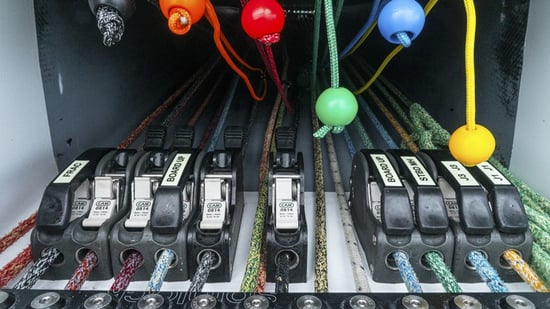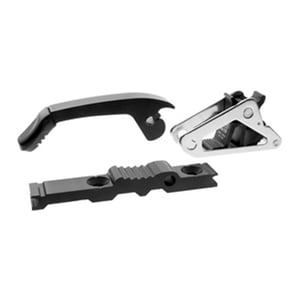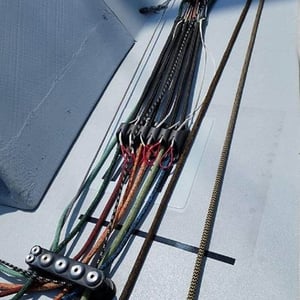
Image credit: Spinlock
It’s a breeze-on day, you have rounded the top mark, set the kite and everything is just about under control. The bowman, now providing ballast at the back of the boat, calls in the gusts. As the pressure reaches the boat you expect to accelerate and start surfing the next wave but instead you hear a zipping noise as the halyard runs through the clutch and the belly of the kite billows out in front of the boat, just above the water. Anyone who has experienced this knows the nightmare of a slipping clutch. If you are lucky, you might be able to keep the boat under control and winch the spinnaker back to the top of the rig. If you are less fortunate, it’s easy to broach or turn the kite into a trawling net. In this blog we look at some of the possible causes of a slipping halyard and how these can be resolved.
Clutches and Jammers
The place to start is to look at the device that is holding the halyard. Is it a clutch, jammer, or something else? Most common on cruiser/racers below 45ft are clutches like the Spinlock XAS, XTS and XCS. These use a ridged cam which clamps the rope down onto a ridged base plate.
As standard, these clutches are shipped with cam and base made from anodised aluminium. While they might be effective when new, these components lose holding power as the teeth become worn and polished over time. This is accelerated when using ropes with high tech cover containing Technora, Kevlar etc. A basic visual inspection can reveal if your clutches are worn as the black anodising is rubbed off leaving a polished aluminium underneath.
The upgrade option is a ceramic coated cam and base which can be retrofitted to existing clutches. The ceramic components provide notably improved holding power and longevity and are well worth the additional cost.


Jammers are an alternative to clutches and typically provide superior holding power. The downside is that on most models the jammer must be unloaded by winching the rope before it can be released.
The third style is the textile clutch where the rope is gripped inside a Technora sock by constriction, in the same way as a Chinese finger trap. French manufacturer Cousin Trestec pioneered the textile clutch with their famous Constrictor but Spinlock now also make the XTX clutch using the same concept. These clutches have a number of advantages, notably reduced weight and the ability to release under load. They are also far kinder to ropes than the ‘hardware’ alternatives.

An important point to consider with all clutches/jammers is the recommended minimum line diameter. With modern Dyneema ropes, line diameters have reduced. Choosing the thinnest halyard possible can save cost and weight, but always check compatibility with the clutches.
Rope Cover Materials
Often overlooked is the construction of the rope itself. A plain polyester cover is more liable to slip than one containing Technora, Kevlar, Vectran, Cordura etc. We would always recommend choosing a halyard which contains polyester blended with some of these high-tech fibres. Polyester/Technora is a popular choice and most manufacturers produce a mid-range rope of this construction which is ideal for halyards.
While less significant than the cover, the core also plays a role in a rope’s holding ability. Braided Dyneema cores maintain their shape and keep the rope round. A soft polyester core can become flattened in a clutch and thus slip if the thickness is reduced to less than the minimum rope diameter for the clutch. This issue doesn’t occur with jammers and textile clutches which apply pressure around the rope rather than just top and bottom.
To Conclude
Solving a slipping halyard issue gives you peace of mind and can end up saving cost in the long run. Keeping the halyard on a winch at all times is undoubtedly a secure solution but often not practical.
- Start by looking at the slipping clutch, is it suitably sized, worn out, or just not adequate for the job?
- Consider upgrading the jaw or swapping the clutch for a textile one.
- Rope cover construction makes a big difference. Choose a halyard with a grippy, durable cover.
If you have any questions please feel free to email us at support@upffront.com, or click the link below to see our full range:


